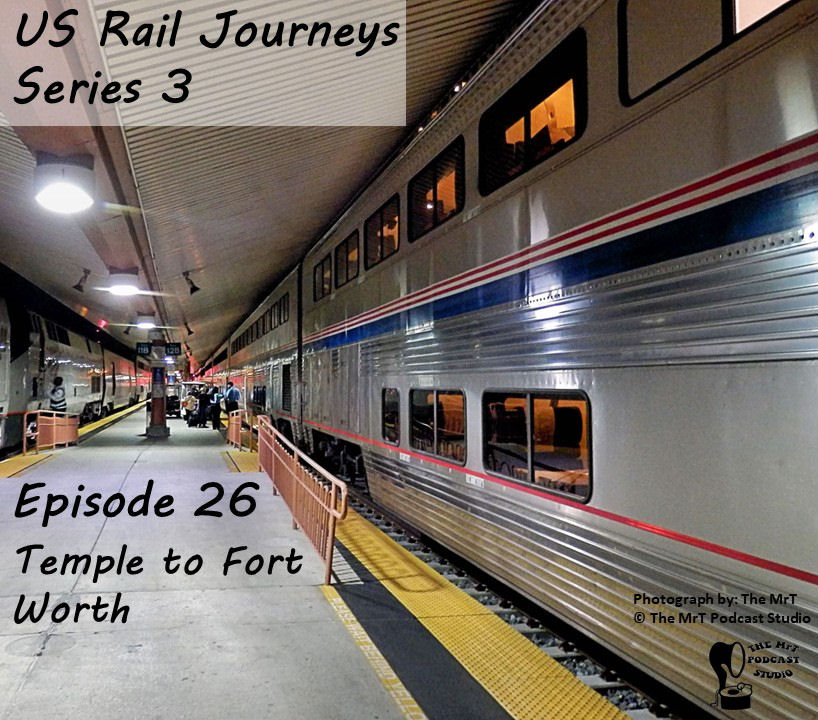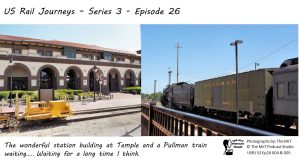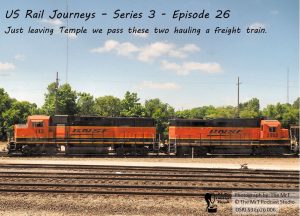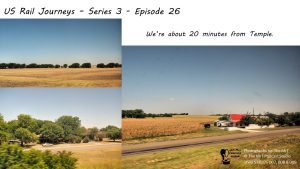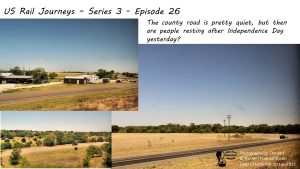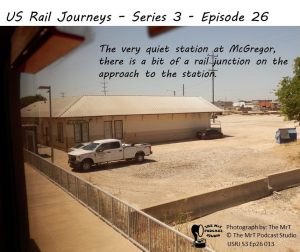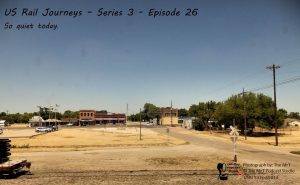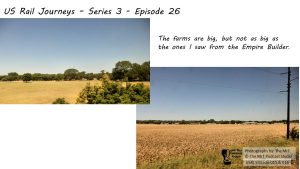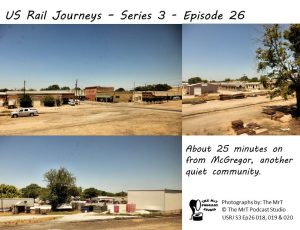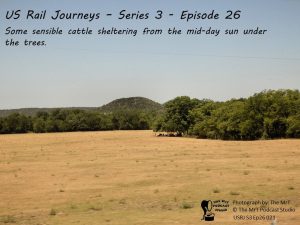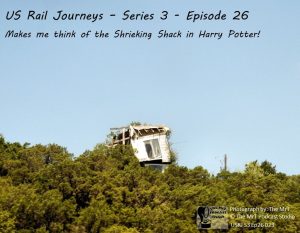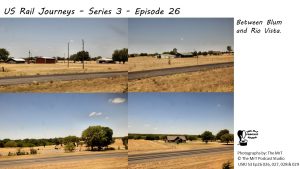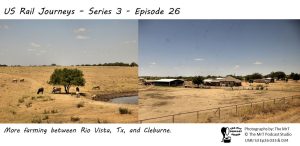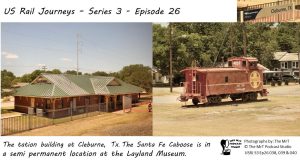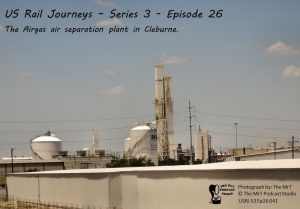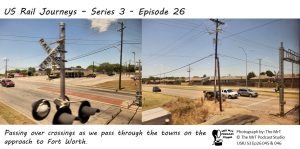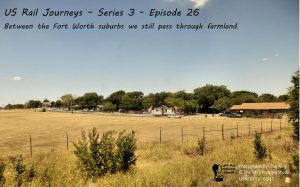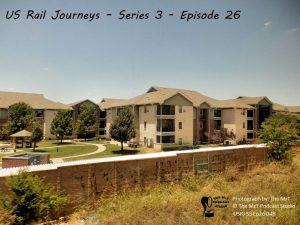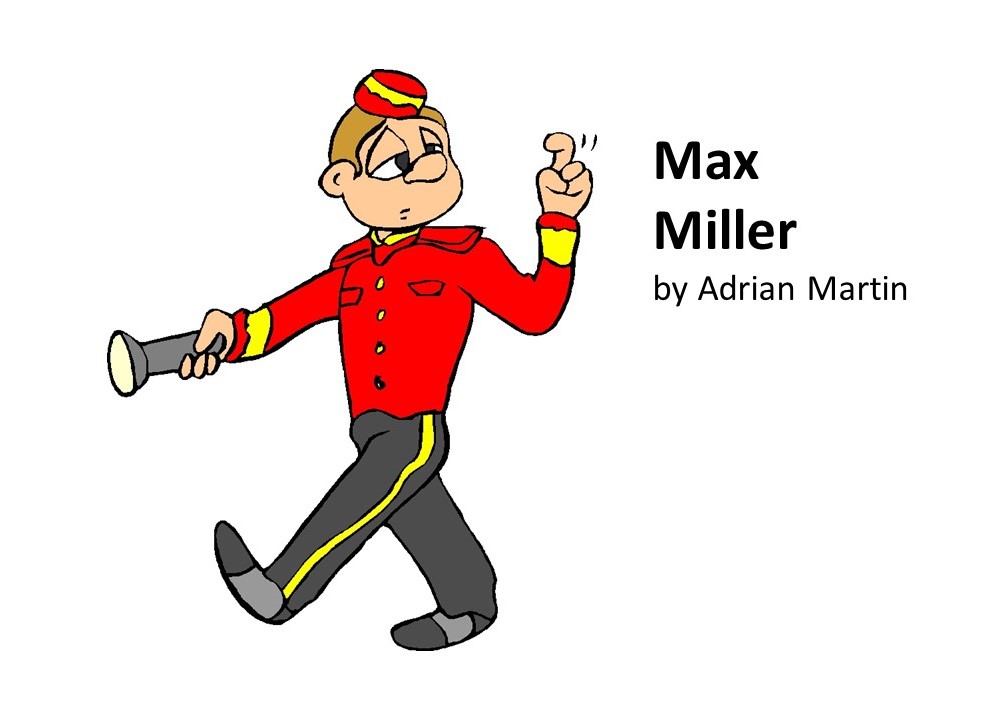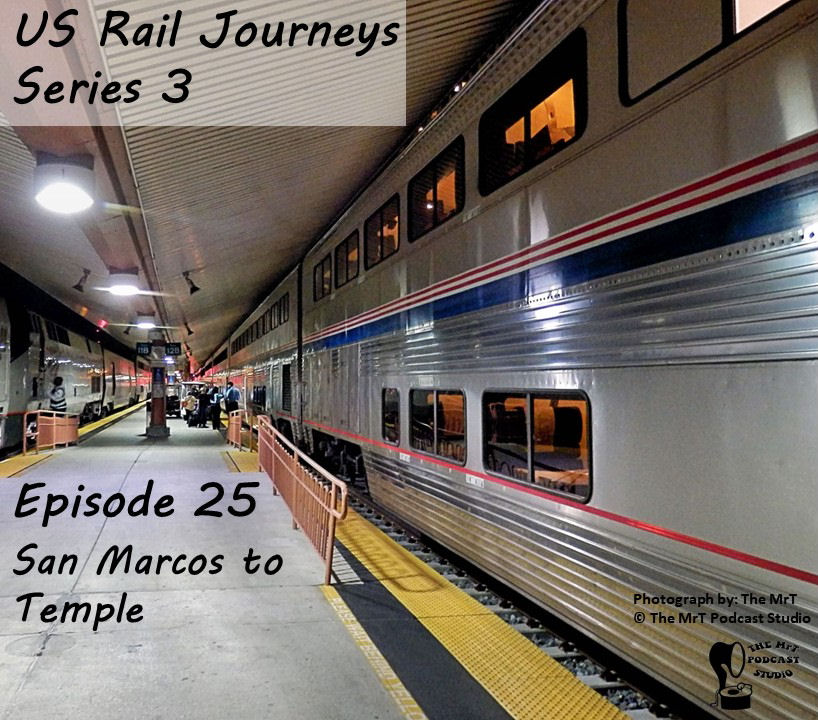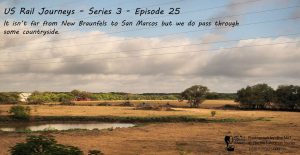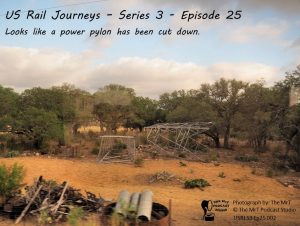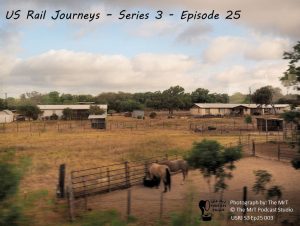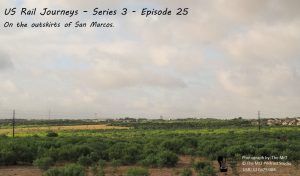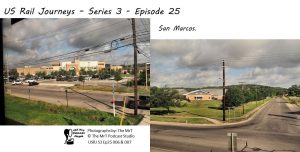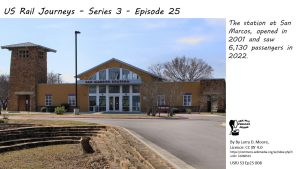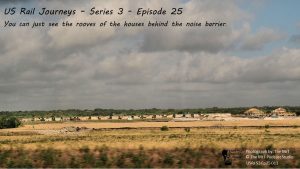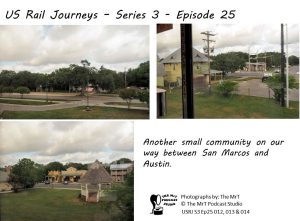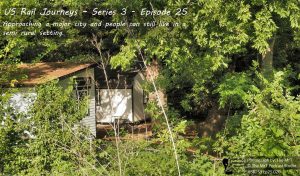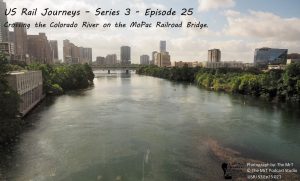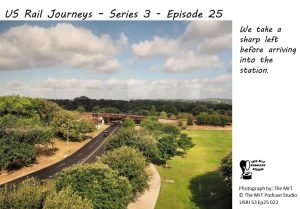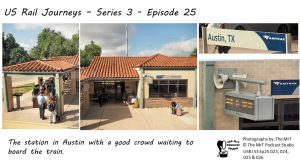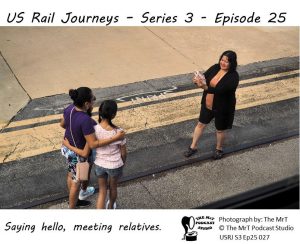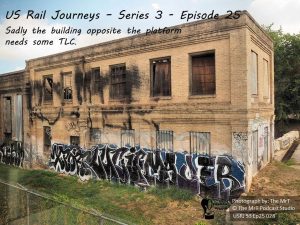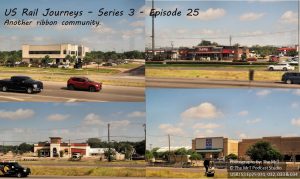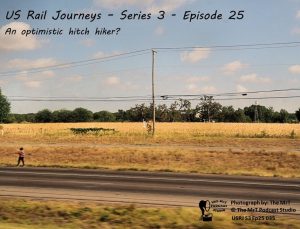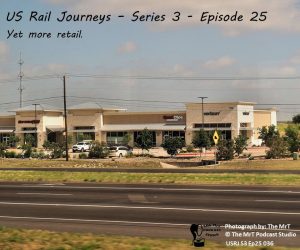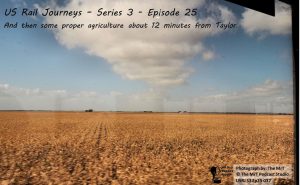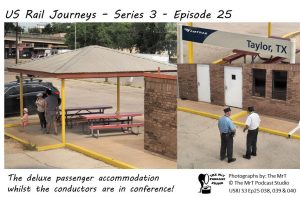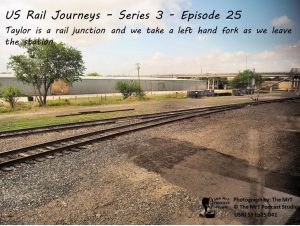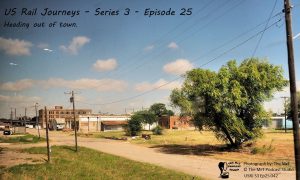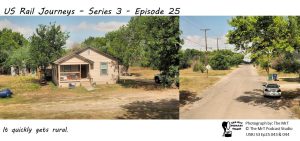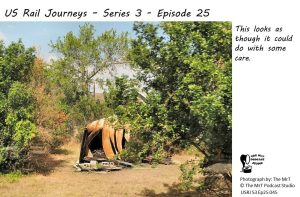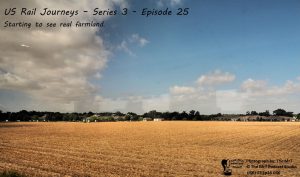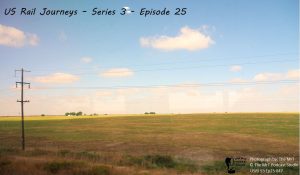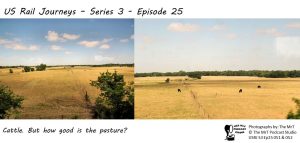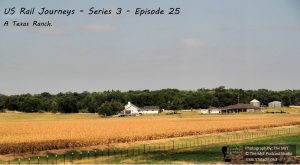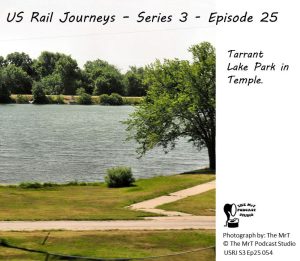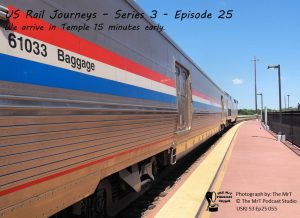Podcast: Play in new window | Download (Duration: 19:38 — 18.0MB)
Temple to Fort Worth – US Rail Journeys Series 3 Episode 26
‘Temple to Fort Worth’ is composed of my thoughts on the 130 mile journey between these two cities. The journey has schedule of 2 1/2 hours but we reach Fort Worth early.
Please click on a thumbnail to see the photographs that go with this podcast:
Temple:
Temple station dates from the Atchison, Topeka and Santa Fe Railway. East of the station, on another railway line through Temple, is a former Missouri-Kansas-Texas Railroad depot.
The station houses the Temple Railroad and Heritage Museum and an Amtrak ticket office. You can visit the museum from Monday to Saturday.
The Amtrak office is open until the northbound Texas Eagle departs.
Next to the station is the home of the Central Texas Area Model Railroaders who have a model train layout. It is is open to the public on the first and fourth Saturday of each month.
McGregor:
McGregor station is a railway station that dates from 1904. This old Atchison, Topeka and Santa Fe Railway station is the closest Amtrak station to Waco, approximately 16 miles to the east.
In 2022 3,344 passengers use the station.
Cleburne:
Cleburne was formerly Camp Henderson. It is named after Confederate General Pat Cleburne. In 1871 the City incorporates.
It becomes a major locomotive works for the Santa Fe Railroad for many years. In 1904 Cleburne becomes the northern end of the Trinity and Brazos Valley Railway.
Today’s intermodal station, built in 1999, serves Amtrak trains and is the office for the local bus operation.
Fort Worth:
As the episode ends we reach Fort Worth. We are still early! I’ll tell you all about Fort Worth in the next episode.
Next up:
If you enjoy these podcasts please join me in a couple of weeks as we continue our journey on the Texas Eagle.
Links:
To visit the Amtrak website please follow this link.
This podcast is also available through Amazon Music, Apple Podcasts, Castbox , Deezer, Podchaser, Spotify, Stitcher and Vurbl and others.
![]()
Music:
AKM Music licenses Steam Railway and Look at the Detail for use in this podcast.

